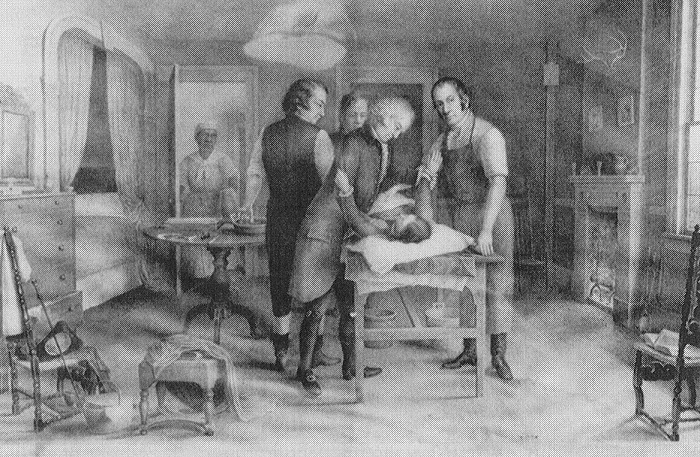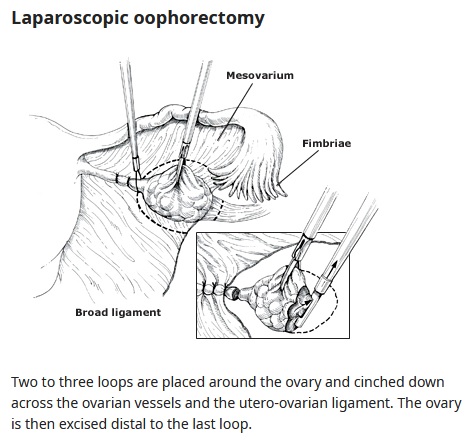On December 25, 1809 surgery took a pioneering step forward. In December of that year, forty-seven-year-old Jane Crawford of Motley Glenn, Kentucky seemed to be pregnant, although she thought she was too old to have more children. Her stomach grew and grew – and kept growing, beyond nine months. At the recommendation of her local doctors, she called upon a physician named Ephraim McDowell, who lived sixty miles away, in Danville. He came – a two or three day journey by horse – and diagnosed her as having an ovarian tumor rather than a baby. Realizing that if it were left to grow, she faced a certain, slow, and agonizing death, she asked for it to be removed, and was warned that such a surgery had never been successfully performed. Crawford accepted the risk, travelling to the doctor’s residence in Danville. There, on Christmas Day, Crawford went under the knife without the benefit of any anesthesia other than reciting Bible verses aloud and possibly a little opium. Some sources suggest that neighbors assembled outside with a noose, should the patient die; or that the surgery was done on Christmas morning explicitly to ensure that lynch mobs had better things to do. Regardless, the pressure on McDowell would have been intense.

Bacteria had not been discovered yet. Like anesthesia, sterilization had also not yet been invented, but McDowell was known for his cleanliness, describing washing the organs with warm water and putting a ligature around the fallopian tube to minimize bleeding and contamination. The procedure took twenty-five minutes. In the end, Ephraim McDowell had removed a tumor over 22 pounds. After a three-week recovery, the patient returned home and lived to be 78. Hers was the first abdominal exploration not to end in peritonitis and death. McDowell performed the surgery successfully several more times, and eventually published on the topic of ovariotomy, or as it is now called, oophorectomy. One such patient was Rachel Jackson, the wife of future President Andrew Jackson. He also removed a bladder stone from another future President, James K. Polk.
Surgery has come a long way since that first oophorectomy in 1809. Medical practitioners today have the benefit of databases with rigorous clinical content to help guide them, including databases like UpToDate, which offers a frequently-updated description of best practices as related to oophorectomy and ovarian cystectomy. But still, modern doctors are possessed of the same bravery when they embark on surgeries that can mean the difference between life and death for their distressed patients.
Interested in learning more about Ephraim McDowell’s pioneering surgery? In addition to the links above, sources like the book Healing Kentucky: Medicine in the Bluegrass State by Nancy Disher Baird or articles like Ephraim McDowell and the First Successful Elective Laparotomy by Harold Ellis, The Resurrectionists by Ryan Bradley, Ephraim McDowell: Father of Abdominal Surgery by Luis H. Toledo-Pereyra, or The Maligning of a Country Doctor by Gordon Bendersky are excellent sources.
For help locating any resources for any of your research questions, just Ask Us! at iueref@iue.edu or click this button:



